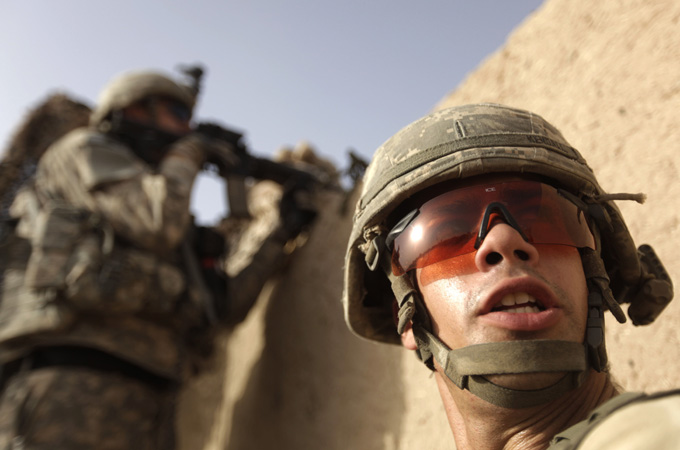US soldier on trial for murder
Charges include conspiracy to kill civilians and possessing human remains in case stemming from Afghanistan deployment.

 |
| The photos linked to the charges of murder and possessing human bones have not yet been released [AFP] |
A US soldier charged with murdering civilians and other crimes in Afghanistan has appeared in court while 11 other soldiers have invoked their constitutional right not to testify in the case.
Nine of the soldiers who declined to take the witness stand on Monday are among a dozen infantrymen of the 5th Stryker Brigade, based in Washington state, who are charged in a case stemming from their deployment in Afghanistan’s Kandahar province.
The first soldier formally accused in the case, Army Specialist Jeremy Morlock, 22, is charged with premeditated murder in the deaths of three Afghan civilians, assaulting a fellow soldier and “wrongfully photographing and possessing visual images of human casualties.”
In two of the killings, fragmentary grenades were thrown at the victims and they were shot, according to charge sheets.
The third victim also was shot. Morlock, from Wasilla, Alaska, wore standard Army combat fatigues and sat silently during the proceedings at Joint Base Lewis-McChord near Tacoma, Washington. If found guilty of all the charges against him, he could face the death penalty.
The Associated Press has reviewed statements Morlock made under oath in which he claimed Staff Sgt. Calvin Gibbs – who also faces charges connected with the incident – planned “scenarios” during which they could kill civilians. For example, Morlock said, if they came across someone in a village that had previously been flagged as having Taliban influence, they could toss a grenade at the civilian and claim they had been responding to a threat.
Gibbs also illicitly collected “drop weapons” that could be placed by the bodies to make them appear to be combatants, Morlock and others said.
“Gibbs had pure hatred for all Afghanis and constantly referred to them as savages,” Morlock said in the statement. “Sometime after Christmas 2009, Gibbs gave me a (fragmentation) grenade and told me that if the situation presented itself that we should go ahead and run with the grenade scenario that he had briefed to us.”
Gibbs’ attorney says all three killings were “appropriate engagements”.
Evidence disputed
Morlock is the first to be brought before a military court for a so-called Article 32 hearing, in which prosecutors and defence lawyers present evidence to an investigating officer who decides whether there should be a formal court-martial.
Morlock’s civilian lawyer, Michael Waddington, insisted his client was innocent and said the case against him was based on thin evidence. “They have no bodies, no weapons seized, no ballistic testing. That’s investigative skills 101,” he said.
One platoon leader who testified, Lieutenant Stephan Moye, described a scene of carnage and confusion just after one of the Afghan victims was killed, but was unable to pinpoint who lobbed the grenade believed to have killed him.
Waddington, suggested in court that the defendant was under the influence of prescription drugs when questioned by an investigator, Anderson Wagner, in May.
Wagner acknowledged knowing Morlock had been taking muscle relaxants, sleeping pills, pain killers and other medications at the time he was interviewing the defendant, but he insisted Morlock seemed “very articulate,” was able to answer questions quickly, and did not seem impaired.
Cover-up conspiracy
Four other US soldiers were charged in June with the same murders as Morlock, and seven additional servicemen have been charged since then with other crimes stemming from the investigation, including conspiracy to cover up the killings.
The soldiers are charged with keeping body parts, including finger bones, a skull, leg bones and a human tooth. Court documents say Morlock threatened a fellow soldier by showing him “fingers removed from a corpse.”
The 5th Stryker Brigade soldiers deployed to Kandahar a year ago, and the killings occurred between January and May, according to charges by army prosecutors.
The case threatens to become the highest profile investigation of alleged crimes by US military personnel during almost nine years of war in Afghanistan.